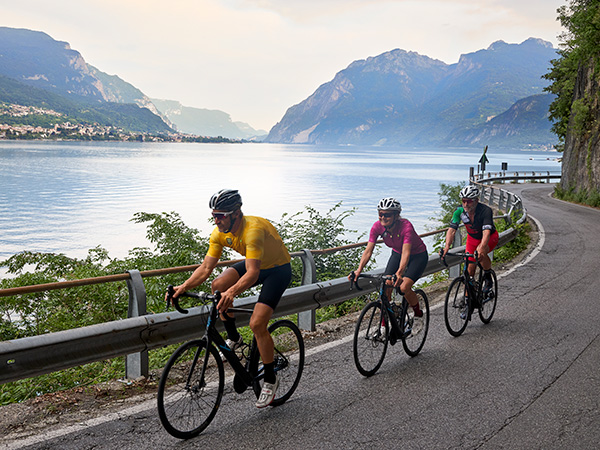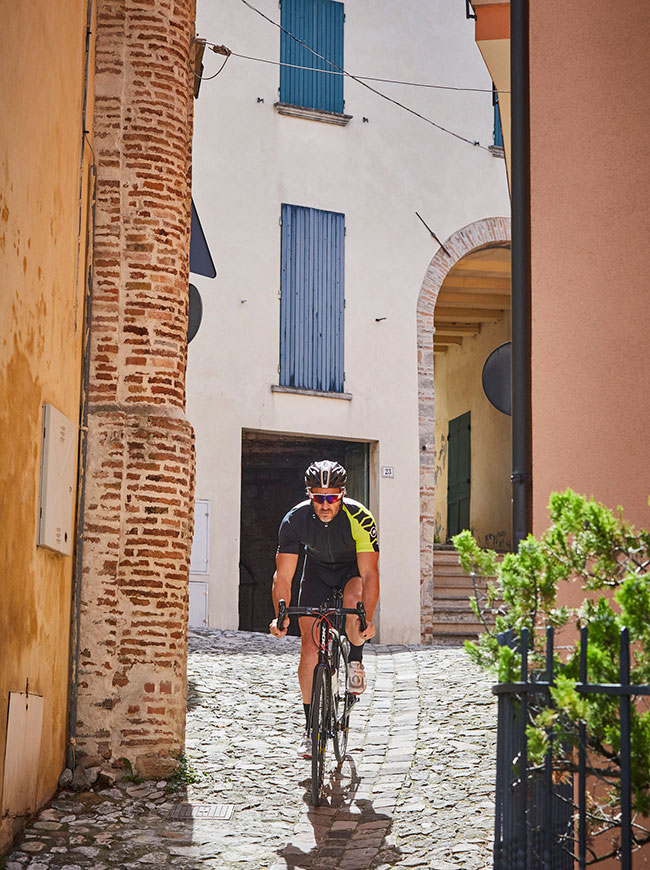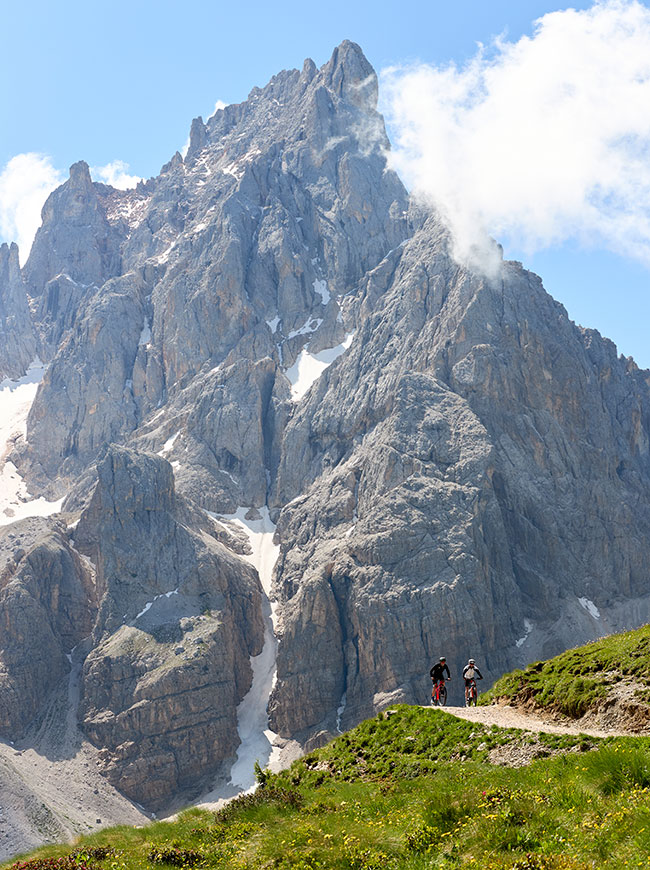Gravel. It’s never far from being part of the conversation in cycling today. Although it’s on everyone’s lips, you can never find a single definition. Because ‘true’ gravel doesn’t exist; there are only the interpretations. Put simply, it could be just a way of life. An adventure to discover the strade bianche and Tuscan wineries? Gravel. A trip to the dirt roads of Valmarecchia in the Rimini hinterland? Gravel. An escape on military roads in the Dolomites? Gravel. If for you pedalling means dust, a taste of the unknown, memorable cuisine and good company, an adventure by gravel bike could be the best way to have an unforgettable experience.
1. The gravel bike
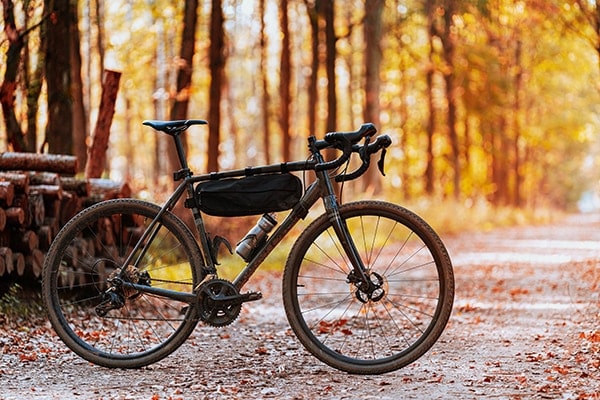
Let’s start with the basics. A gravel bike makes for a smooth ride on tarmac and an agile, capable steed off-road. Unlike a road bike, the frame of a gravel bike has a more slack, forgiving geometry that favours comfort and stability on a variety of terrain – whilst the generous spacing means larger tyres can be fitted for grip off-road (taking inspiration from cyclo-cross and mountain bikes).
2. Gravel wheels and tyres
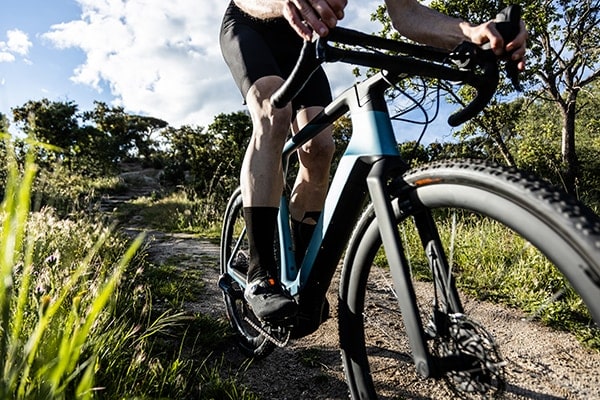
In the absence of suspension, gravel bike tyres are trusted with the task of cushioning the inevitable impacts that occur when riding off-road. If the route includes a lot of tarmac and easy dirt trails – such as the famous white roads of Tuscany – a tyre width between 35 and 40 mm will be more than capable. On the other hand, if the route planned includes more demanding off-road sections, maybe some singletrack or more typical mountain bike trails, your gravel bike can be equipped with 42 or 50 mm wide tyres (just make sure your skills are up to scratch).
3. Choosing the route
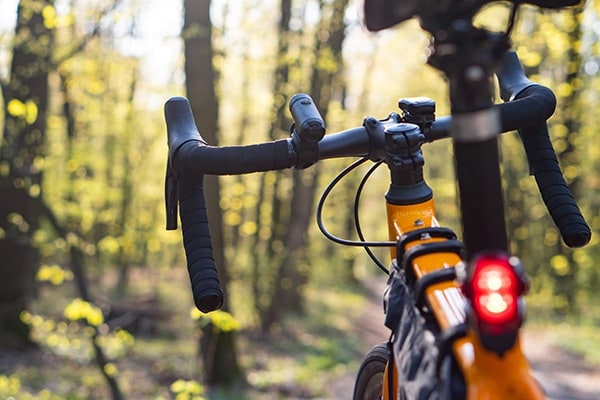
Gravel means dirt, so every ride with a gravel bike must include off-road sections. If you’re looking for a less demanding ride – something that only just reaches beyond the capability of a road bike – the trails that run along the banks of a river or the roads used for agriculture are ideal. These generally offer smooth rides – providing you don’t encounter the cobblestones of Roubaix – without the need to worry about difficulty. If you’re looking for more of a challenge, forest trails and mountain bike singletrack are great options for gravel riders seeking a test for themselves. Just remember to pay attention to elevation; pedalling uphill off-road requires much more energy and descending can be technical, demanding and a greater undertaking than a typical road descent.
4. The essentials for a gravel ride
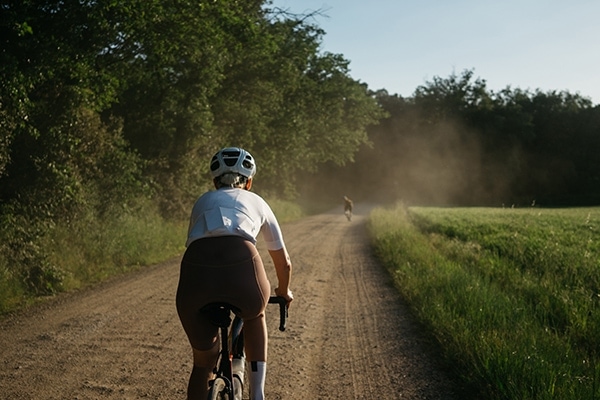
Riding off-road makes it easier to get punctures, so preparation is imperative; a spare inner tube – or repair kit for tubeless tyres – and a pump can never be missing from your ride kit. Gravel rides also require a greater fuelling demand, so make sure to carry snacks and plenty of water with you. If hunger does call, don’t hesitate to stop for a bite to eat, as gravel riding always allows for the indulgence of your palate. If you plan to ride close to the first hours of sunrise or near sunset, front and rear lights are key – and cycling clothing with reflective details is ideal.
5. The ideal company for gravel bike ride

Bike and route aside, company is what makes gravel cycling uniquely enjoyable. You will appreciate it as soon as you bite into a sandwich at the end of the trip, after the post-ride toast with your companions. The laughter and dust-stained pats on your back will make the memories of cycling, exploring and friendship unforgettable. So choose the gravel bike you prefer, plan the route you want, and share it all with people who are eager to experience a new adventure. Just like you.
Are you looking for some tips on the perfect Italian destinations for your next gravel bike holiday? Take a look below:
TuscanyVenetoGarda LakeAdriatic coastApulia
© All rights reserved


